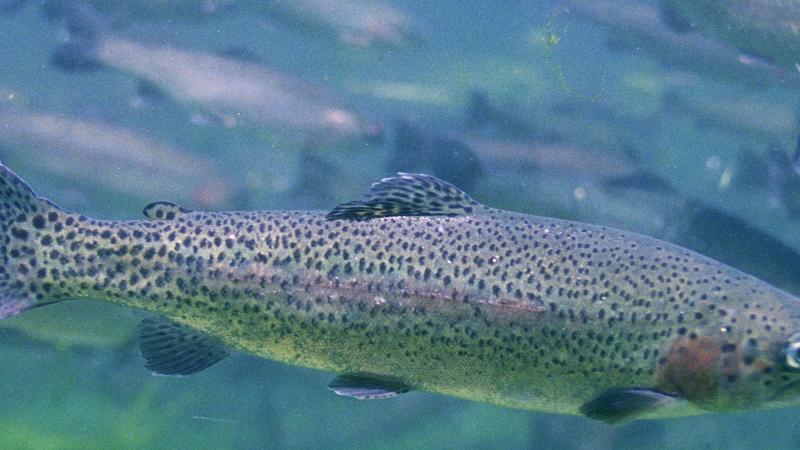February 24, 2017


[The Jefferson Project at Lake George is conducting ongoing research into how human activities may be affecting the lake. This guest blog by Bill Hintz, a post-doctoral research associate in the lab of Jefferson Project Director Rick Relyea, summarizes recent research published in the journal Environmental Pollution. The Jefferson Project is a collaboration between Rensselaer, IBM Research, and The FUND for Lake George, founded to develop a new model for technologically enabled environmental monitoring and prediction to understand and protect the Lake George ecosystem and freshwater ecosystems around the world.]
What did you want to know?
We wanted to know how common road salts affect young trout found in streams, and which salts are the most toxic. Three of the most common road deicing salts are sodium chloride, magnesium chloride, and calcium chloride. Snow melt and stormwater runoff carries these salts off roads and eventually into streams. The contamination of stream ecosystems by road salts can negatively affect organisms in the streams. Given that young trout and salmon are hatching and growing in streams in the spring, it is important to know how road salts affect the growth of newly hatched trout.
How did you go about it?
We acquired newly hatched rainbow trout from a local hatchery and exposed them to five environmentally relevant concentrations of sodium chloride, magnesium chloride, and calcium chloride. These concentrations can be observed in streams of the Lake George basin and in streams around the world where road salts are applied. We exposed trout to road salts for 25 days as they grew and developed, and then weighed and measured them.
What did you find out?
Road salts had distinct effects on trout growth, but none of the salts affected trout development or resulted in death. Magnesium chloride did not affect trout growth at any concentration, which was interesting because it is thought to be the most toxic deicing salt to fish. The most common deicing salt, sodium chloride, did not affect trout growth at the lowest three concentrations, but reduced trout length by 9 percent and mass by 27 percent at the highest concentration, which is a concentration observed in highly contaminated streams. We found that calcium chloride had the greatest impacts on trout growth. At modest concentrations, it reduced trout length by 5 percent and mass by 16 percent. At the highest concentration, calcium chloride reduced trout length by 11 percent and mass by 31 percent. Our findings indicate that sustained high levels of road salt in streams could lead to smaller young trout, which may have implications for the health of recreational trout fisheries.
The research, titled “Impacts of road deicing salts on the early-life growth and development of a stream salmonid: Salt type matters,” can be found with the DOI: 10.1016/j.envpol.2017.01.040